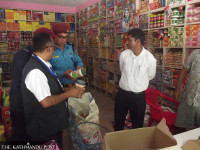Editorial
Season of lies
The range of dissemination possible in the social media age helps amplify false information.
Earlier this week, dozens of news outlets wrote that a case had been registered at the Commission for the Investigation of Abuse of Authority (CIAA) against Kathmandu Metropolitan City (KMC) deputy mayoral candidate Sunita Dangol for faking her educational qualifications while taking up a consultant position at the metro city office. However, a fact checking website, nepalfactcheck.org, has revealed that this is fake news. She had indeed taken up a consulting job at the KMC office, but it turned out that the news item had been based on a false information campaign aimed at discrediting her credentials, a potent weapon increasingly being used against political opponents during elections.
Dangol became a target of false information even as her moral conviction has been brought into question for running alongside a controversial mayoral candidate, Keshav Sthapit, whom the Election Commission has asked to submit a written response for calling his opponent an “international fraud”. Instances of the spread of false information are aplenty as local elections come near, and candidates desperate to make the mark seek ways to defame their opponents with an aim to bolster their own image. The competitive spirit of elections means that candidates or the parties that support them use misinformation as a tool against the opponent.
The dissemination of false information during elections is not a new phenomenon, but the sheer speed and range of dissemination possible in the social media age helps amplify false information. What’s more, social media provides little scope for regulation or accountability. Aiding the false information providers are various news outlets that relay the information without checking the facts. In fact, this is a time when mediapersons depend on social media to source information, and they do not even bother to verify the information they have. In doing so, they end up amplifying the false information that is already doing the rounds on social media.
While the spread of false information is a regular phenomenon, it gets to a wholly new level during elections as candidates or their supporters defame and discredit their political opponents. An epitome of the spread of false information was Donald Trump’s electoral campaign in the United States of America, where he called every other news source that questions his integrity fake news, effectively blurring the line between real and false information. When false information is disseminated to the public repeatedly, the public often ends up believing false information to be true and calling real information ‘fake news’.
The spread of false information through traditional as well as social media is often divided into three categories: Misinformation, a condition where false information is shared without the intent to harm others; disinformation, a condition where false information is shared with the intent to harm others; and malinformation, a condition where genuine information is shared with the intent to harm others. The government, the media, and the people should come together to combat the spread of false information as it undermines the idea of fairness in democratic elections.




 16.12°C Kathmandu
16.12°C Kathmandu













